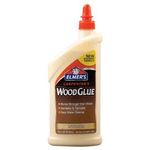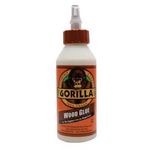The 2018 Model Bridge Competition Capital District's 38th Anniversary Celebration of National Engineer's Week Albany Marriott Hotel - February 15 ...
←
→
Page content transcription
If your browser does not render page correctly, please read the page content below
16-17
The 2018 Model Bridge Competition
Capital District’s 38th Anniversary Celebration
of National Engineer’s Week
Albany Marriott Hotel - February 15, 2018
The Model Bridge Competition is open to full-time high school students. It involves
building a model truss-type or arch-type bridge out of balsa wood with the parts joined
by yellow carpenter’s glue. See page 3 for helpful hints and pages 4 and 5 for model
dimensions and construction requirements .
Each model will be judged on its aesthetics (appearance and quality of construction),
then weighed and loaded to failure by a testing machine. Model efficiency scores will
be computed based upon maximum load at failure divided by the weight of the model.
Cash prizes will be awarded for first, second, and third places in categories of efficien-
cy, load capacity, and aesthetics. There are also school prizes for best average effi-
ciency and load rating per student.
The contest is sponsored by:
x Foundation for Engineering Education.
x Structural Engineering Institute of the Mohawk-Hudson Section of the American Society of
Civil Engineers.
x Eastern New York Chapter of the Association for Bridge Construction and Design.
x Curtis Lumber Company, Ballston Spa, NYBasis for Competition:
Each model will be examined by a judging panel for aesthetically pleasing design and
craftsmanship before being weighed, loaded to failure and ranked by a model efficien-
cy number. The model efficiency number is the maximum load in grams divided by the
weight of the model.
Prizes:
Cash prizes will be awarded following the competition (time permitting) or via mail.
Category 1st Place 2nd Place 3rd Place
Efficiency: $500 $250 $100 An E-Week Tradition
for Over 30 Years!
Load Capacity: $150 $100 $50
Aesthetics: $150 $100 $50
$200 prizes will also be awarded to the school whose students have the highest aver-
age Efficiency per student and the highest average Load Capacity per student.
Pre-registration:
Students planning to enter the competition are requested to pre-
register by e-mail (individually or through their advisor) to the at-
tention of Chris Lesher, clesher@ryanbiggs.com.
Please provide the following information: student name, e-mail,
telephone number, school, and name of advisor/teacher.
Pre-registrations are requested by February 1, 2018
There is no cost to register or compete. Schools/students are
responsible for providing their bridge materials and transportation
to and from the Albany Marriott Hotel, 189 Wolf Road, Albany.
Submitting Entries:
Bridge models shall be entered by completing the tear-off coupon below. Model entries shall be hand-delivered to the contest
for arrival after 8:30, but no later than by 9:30 a.m. or mailed in advance in packaging to withstand the trauma of shipping to:
- Christopher Lesher, P.E., c/o Ryan Biggs | Clark Davis Engr. & Survey, P.C., 257 Ushers Road, Clifton Park, NY 12065.
- Please write “2018 MBC” on outside of package.
Models shall be marked on the bottom with student's name, telephone number, and school.
2018 MODEL BRIDGE CONTEST
REGISTRATION FORM
NAME
AGE TELEPHONE (HOME)
SCHOOL GRADE
SCHOOL ADDRESS
ADVISOR NAME __________________________________ EMAIL
Complete and hand-deliver this form with bridge model by 9:30 AM on day of competition or mail to the above
address. Deadline for receipt of models shipped is February 13, 2018.Helpful Hints:
1. Draw a sketch of your bridge first. Try different designs and select a design that you are able to con-
struct (See last page for examples of bridge types). Design counts towards the aesthetics awards.
2. Make sure your bridge meets the rules (See first and fourth pages).
3. Practice assembling the pieces of your model before gluing them together.
4. Top chord (horizontal) members of trusses will go into compression and tend to bend or buckle.
These members should be large enough so they will not buckle too soon. They should also be
straight and symmetrically aligned. Horizontal and diagonal bracing members between top chords will help resist buckling
and increase load capacity.
5. Bottom chord (horizontal) members of trusses will go into tension. These can be smaller than top chord members.
6. Tension diagonals (webs) slope downward from the top chord towards the middle of the span.
7. Compression diagonals (webs) slope downward from the top chord towards the end supports. These should be larger than
tension diagonals.
8. Connections tend to be the weak points. Compression members will push on connections while tension members will try
to pull away. Reinforcing gusset plates glued to each member at connections will strengthen connections.
9. Wood is stronger parallel to its grain, weaker perpendicular to its grain. Align gussets with grain parallel to tension forces.
10. Clamp joints when gluing for stronger bond.
11. Load is greatest at midspan where the load is applied. Strong deck and connections are required here to transfer load
from the load plate through the deck to the bottom chords and web members.
12. Try testing the strength of individual members by pushing down on them (compression) or by pulling on both ends at the
same time (tension).
13. Use care and work safely while constructing your bridge. Craftsmanship counts towards the aesthetics awards.
An Excellent Link on the Web: http://www.sciencebuddies.org
Go to the Project Ideas tab and select Civil Engineering (under "Engineering")
Go to Page 4 and select "The Design Process: Creating a Stronger Truss"
Reference Materials:
Trusses, A Study by the Historic American Engineering Record, National Park Service (excerpt attached)
Wood Engineering and Construction Handbook, 2nd Ed., by Keith F. Faherty & Thomas G. Williamson, McGraw Hill
Timber Construction Manual, 4th Ed. by The American Institute of Timber Construction
Understanding Wood by R. Bruce Hoadley, The Tauton Press
Questions?
Contact Chris Lesher at 406-5506 or by email
clesher@ryanbiggs.com.
For the most current information, schedule, and E-Week
program, please visit the Capital District E-Week web-
site: http://www.capitaldistricteweek.org/
Please join us on February 15, 2018.
The excitement begins at 9:30 am.
Have Fun and Good Luck!Details of Construction:
1. Models must be made solely by the student entrant.
2. Models shall be constructed entirely of balsa wood bonded only with any commonly
available yellow carpenter’s glue.
(acceptable glue) (unacceptable glue)
3. Decorative painting of the balsa wood members is acceptable, but no painting or other coating shall be applied over the
glued joints. The yellow carpenter’s glue must remain visible. "Dipping", soaking, or painting to add strength is not
allowed.
4. Models shall be constructed as a truss bridge with each side containing at least two (2) panels. See the attached sketch
for examples. No solid (one piece) models, or models carved from one piece of wood, are allowed.
5. Model dimensions and requirements shall be as follows and in the attached sketch.
x The model shall be 400 millimeters (mm) long, no more and no less. This is critical for the bridge to fit on the sup-
ports of the load test machine.
x The model shall be no greater than 200 mm high and no greater than 100 mm wide.
x The interior distance between the truss sides shall be at least 55 mm.
x The "roadway deck" shall be continuous without openings or gaps, and shall not be greater than 15 mm deep. The
total thickness at the bottom chords shall not be greater than 20 mm deep
x The area immediately above the roadway deck shall be clear for “vehicular traffic” to pass as if the bridge were an
actual highway bridge. Cross members between truss top chords are recommended, but any additional bracing be-
tween the side trusses shall not extend more than one third of the distance from the top chord to the roadway deck.
x Testing machine supports are 12 mm wide at each end and will not support lateral thrust developed by the model.
x No part of the model shall be extend below the end supports that bear on the testing machine. No exceptions.
x The model must have an opening centered in the top of the structure through which the loading plate can pass to
bear on the "roadway deck". A 10mm hole through the “roadway deck” shall be provided for the load piston. This
hole must be at the center of the bridge (in width and length). This is critical for the bridge to accommodate the load
mechanism of the test machine.
x A load plate 50 mm x 50 mm will be used to load the structure at mid-span. This is a common point for bridges to fail
prematurely due to inadequate deck or connection strength. The "roadway deck" and its connection to the side truss-
es should be strengthened (reinforced) at this load point.SHADED AREA SHALL REMAIN OPEN
THROUGHOUT BRIDGE (AS IF TO
ALLOW VEHICLE PASSAGE SIMILAR
TO A HIGHWAY BRIDGE)
* *
* INDICATES 12 mm SUPPORT WIDTH AT EACH END OF BRIDGEYou can also read
























































